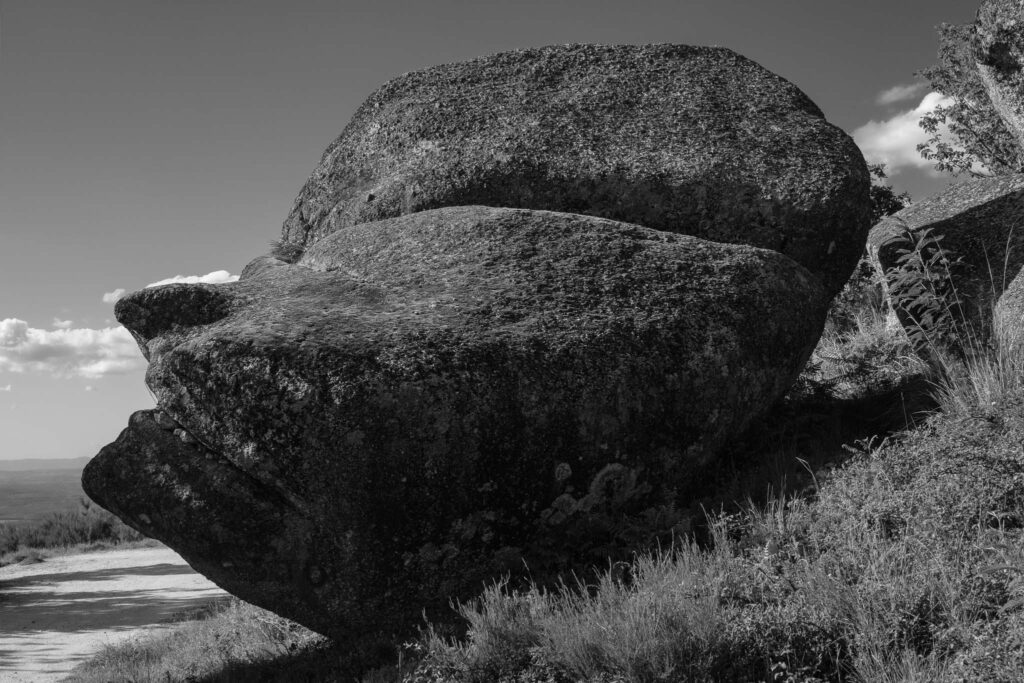A few weeks ago I visited Serra da Estrela, in central Portugal, during several days. In one of the days, my plan was to trek between Lagoa Comprida and Covão dos Conchos, but the weather was uncooperative; the fog was so dense the visibility was near zero. I had the chance to go back last week, and this time it was possible to walk along this wonderful trail. A location map is given below.
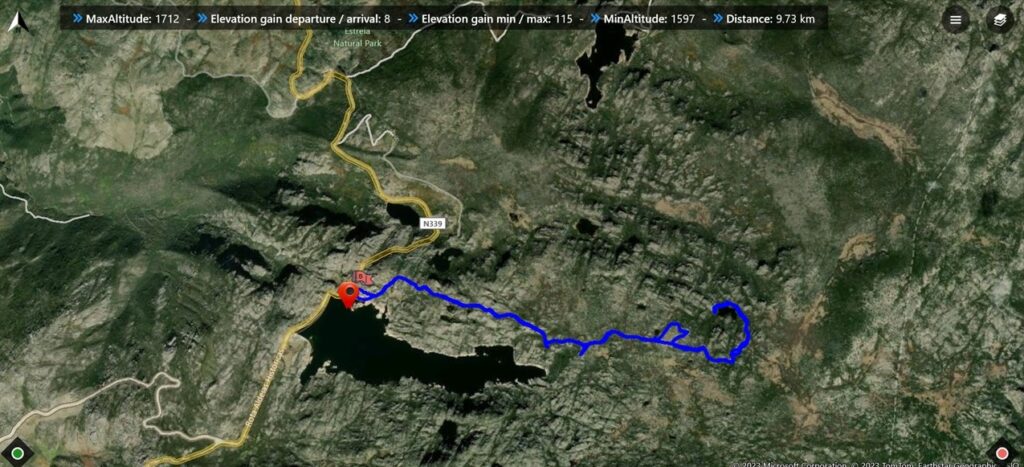
Located at an altitude of around 1,600 m, Lagoa Comprida is an artificial lake in the municipality of Seia, created by a dam that was initially built in 1912; the structure underwent several updates since then. Covão dos Conchos is another artificial lake, built in 1955, about 5 km away, that recently has become famous due to a particular structure, but that is for later. These two dams are part of the larger water storage and management system that exists in Serra da Estrela.
It is easy to reach Lagoa Comprida from several surrounding towns, like Seia, Gouveia, Manteigas and Covilhã. The mountain roads are often narrow but are kept in a good conservation state. The day dawned with a persistent fog, so I decided not to risk it again, and only went up around noon, when the weather started to clear. I started the drive from Seia, on the western slope of the mountain. Serra da Estrela is the highest mountain in continental Portugal, so after a few km, the road starts to climb steadily, until it reaches the plateau in Lagoa Comprida. Along the way, the views are breathtaking, and the air is fresh and crisp.
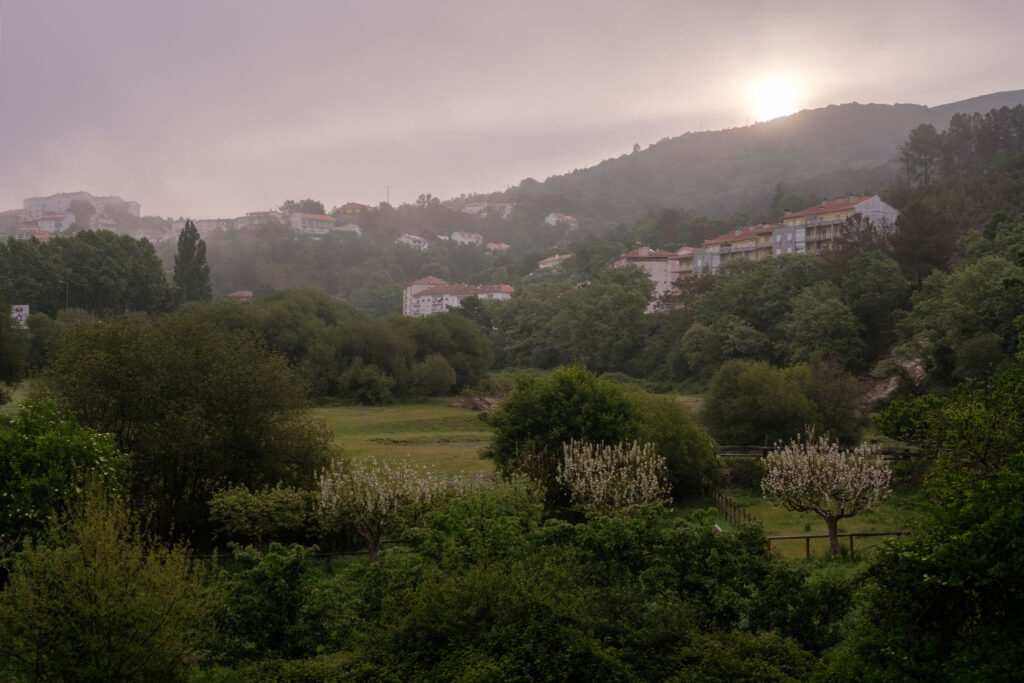
The trail starts on the left side of the souvenir/coffee shop, and is very easy to follow. The scenery is dominated by the deep blue water of the lake, which contrasts with the rugged granitic landscape. Some menacing clouds loom on the horizon, adding a touch of drama. When the ice from the last ice age melted, it left behind fractured granite outcrops, and glacial erratic blocks; today, the cycles of freezing and thawing continue to fracture the rock, creating a unique landscape in Portugal.
I put my camera to good use, and took many photos of this wonderful landscape. I decided to take with me only one lens, the Fujinon 33mm f/1.4, mounted on the Fujifilm X-T4 camera. I think a lens with a standard focal length is a good option for this area. Given the rugged character of the granitic terrain, I also converted some images to black and white.

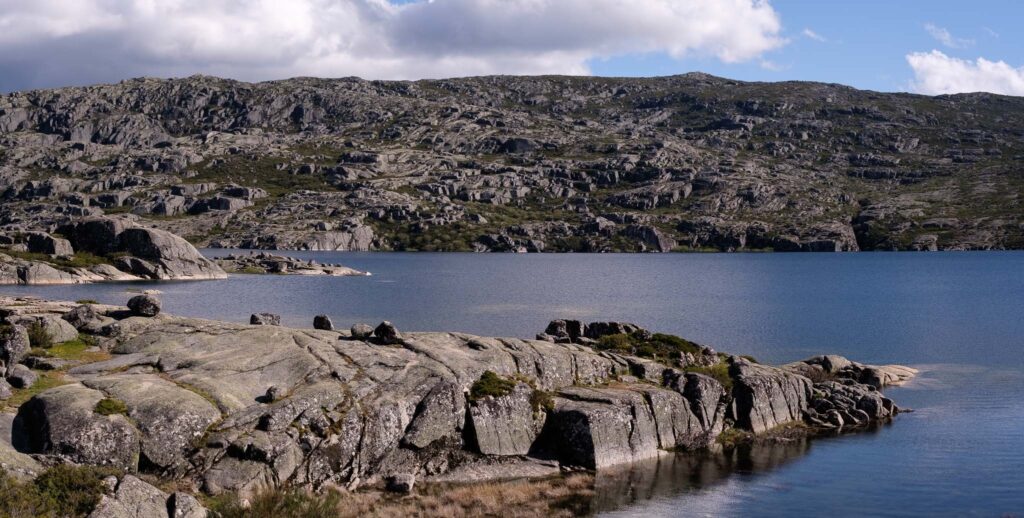
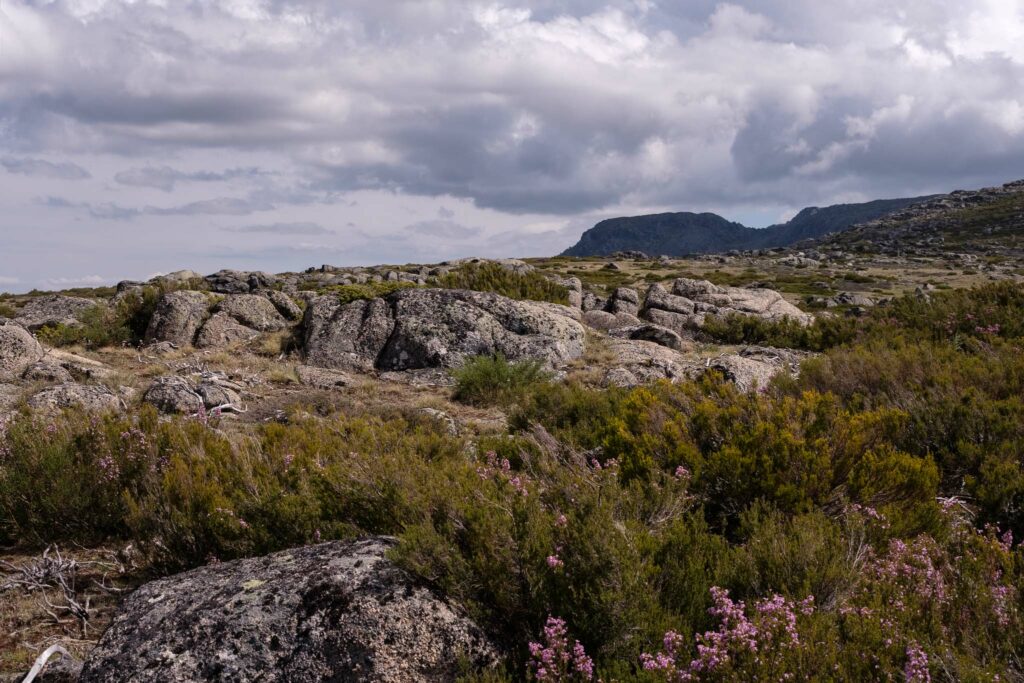
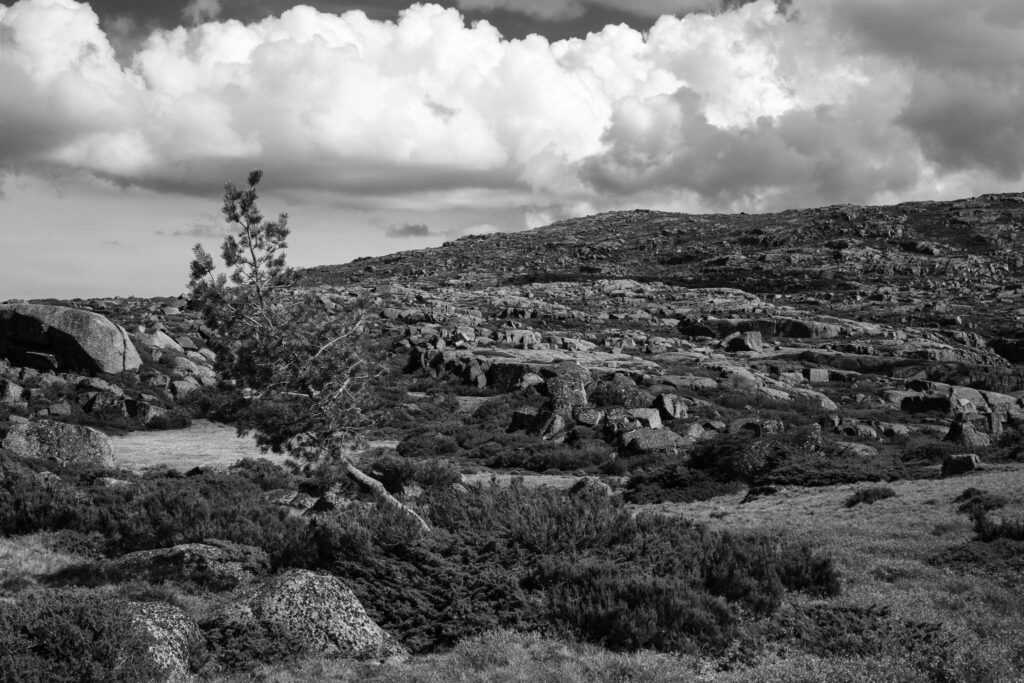
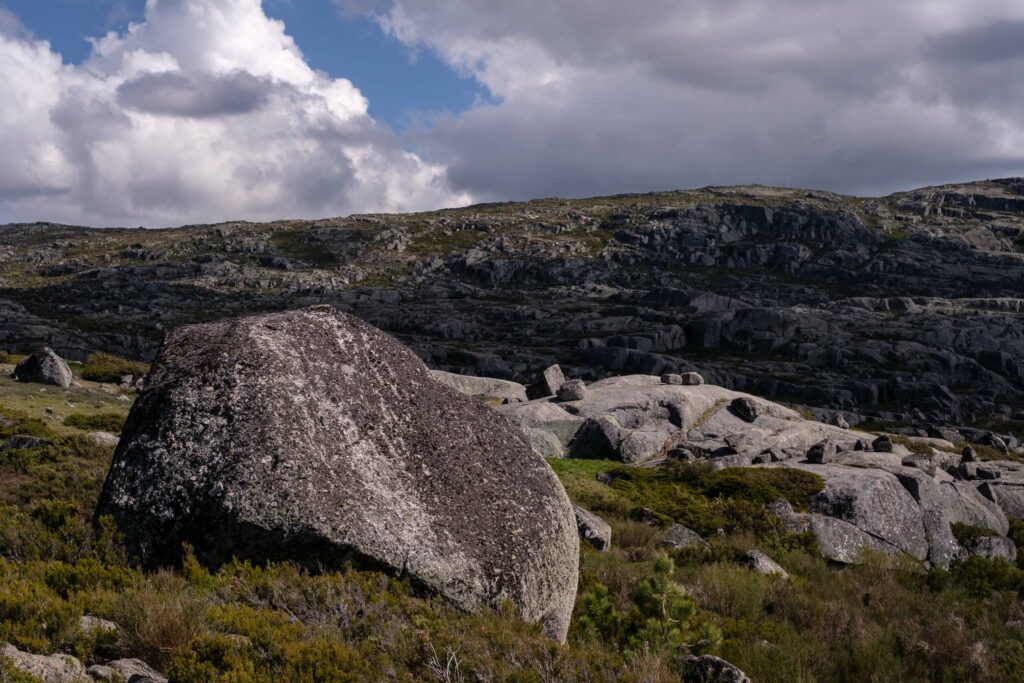
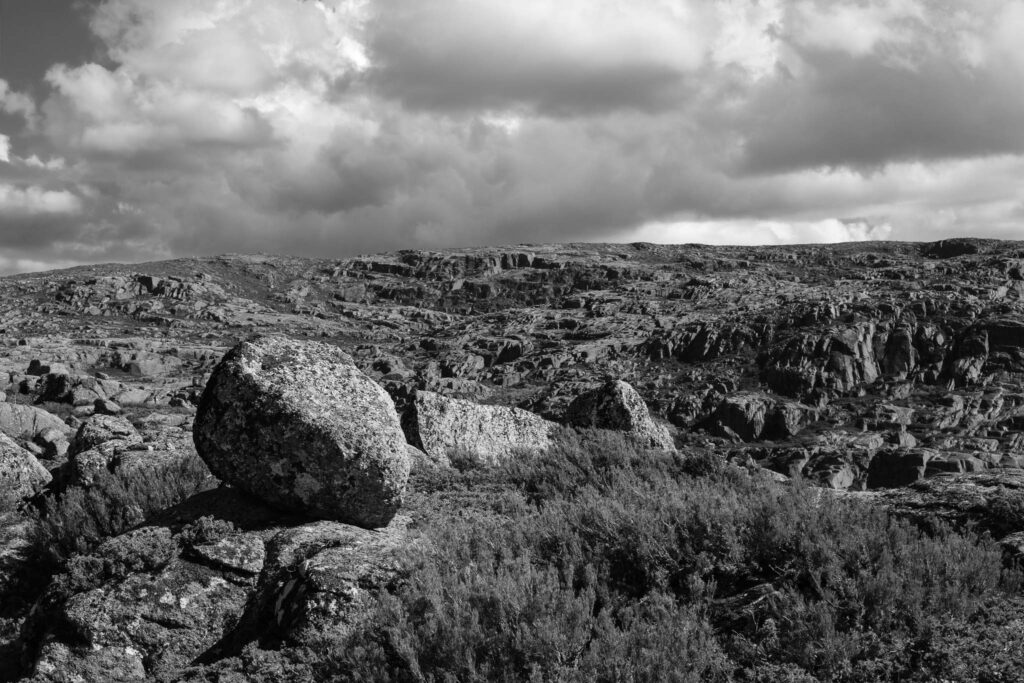
In contrast with the ruggedness of the landscape, a few patches of blooming flowers add color to the scene. Typical springtime in the mountain.
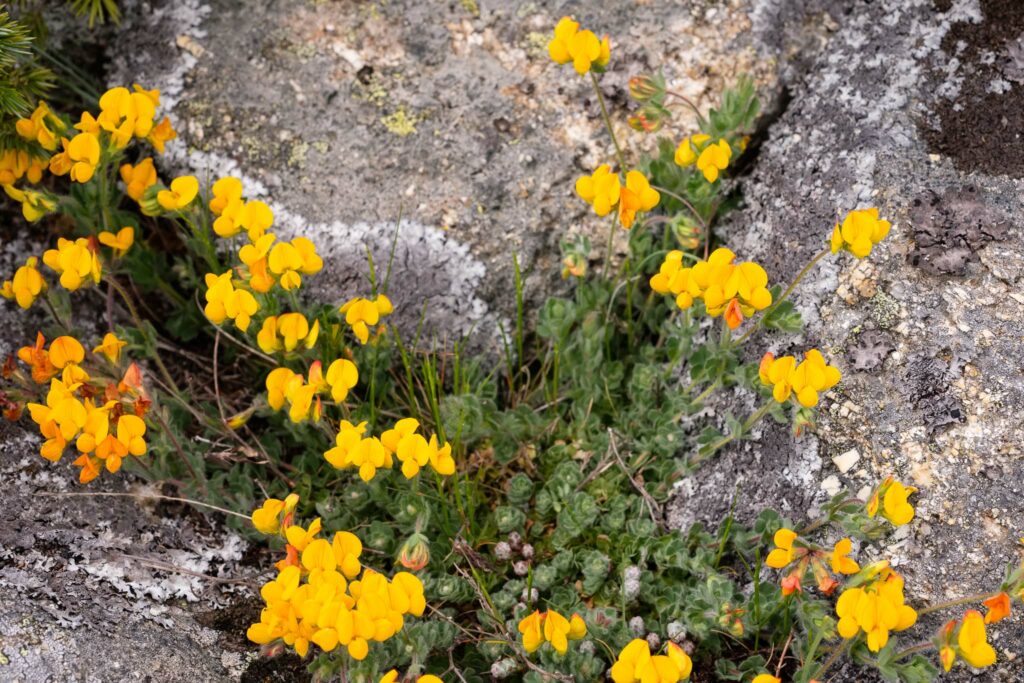
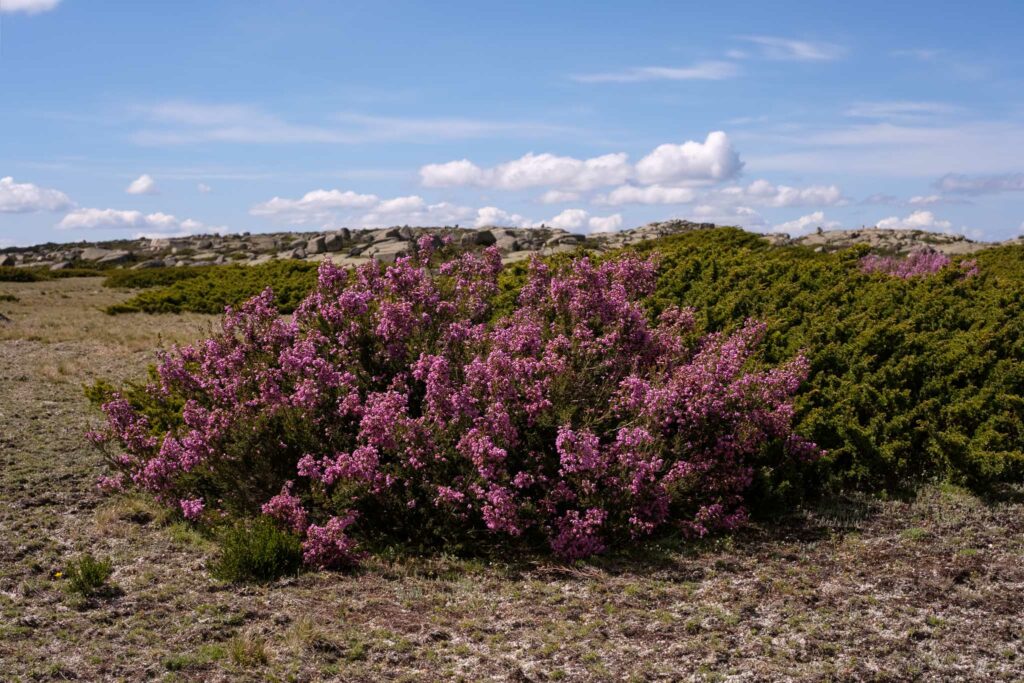
After a leisurely walk, I arrive at Covão dos Conchos; in local parlance, “covão” is a depression, or pit. In this case, a small dam was built to store the water coming from a nearby creek. But what attracts people to this place is the “funnel”, a circular spillway structure that was built in the lake. From above, it looks like a portal into another world. In fact, it is part of an underground channel that carries the water from Conchos to Lagoa Comprida. I walk around the area for a while, taking photos from different places.
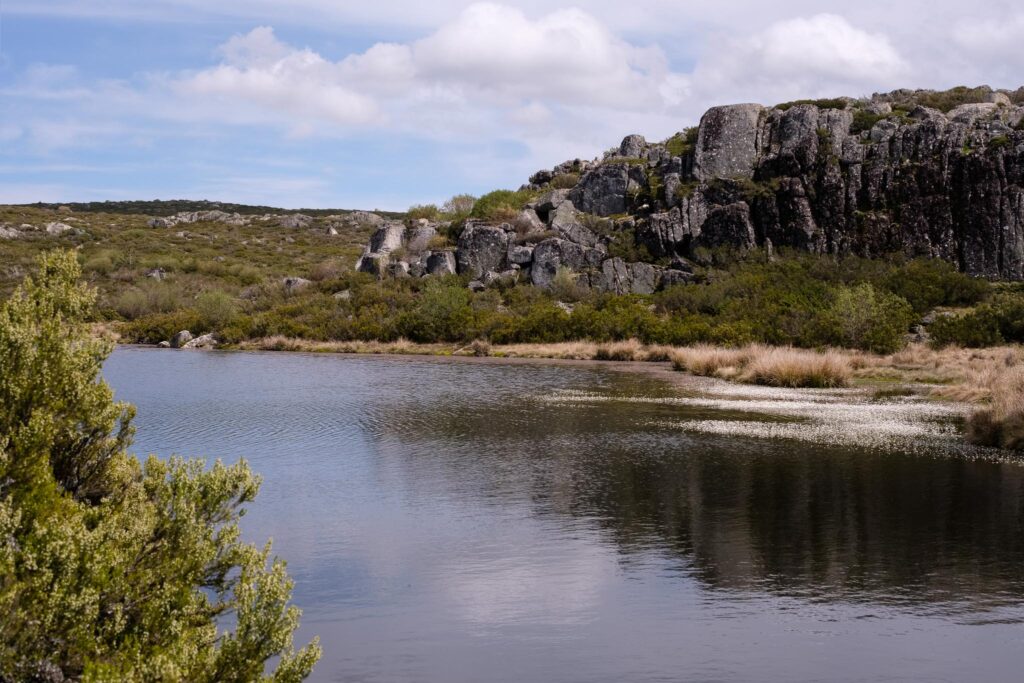
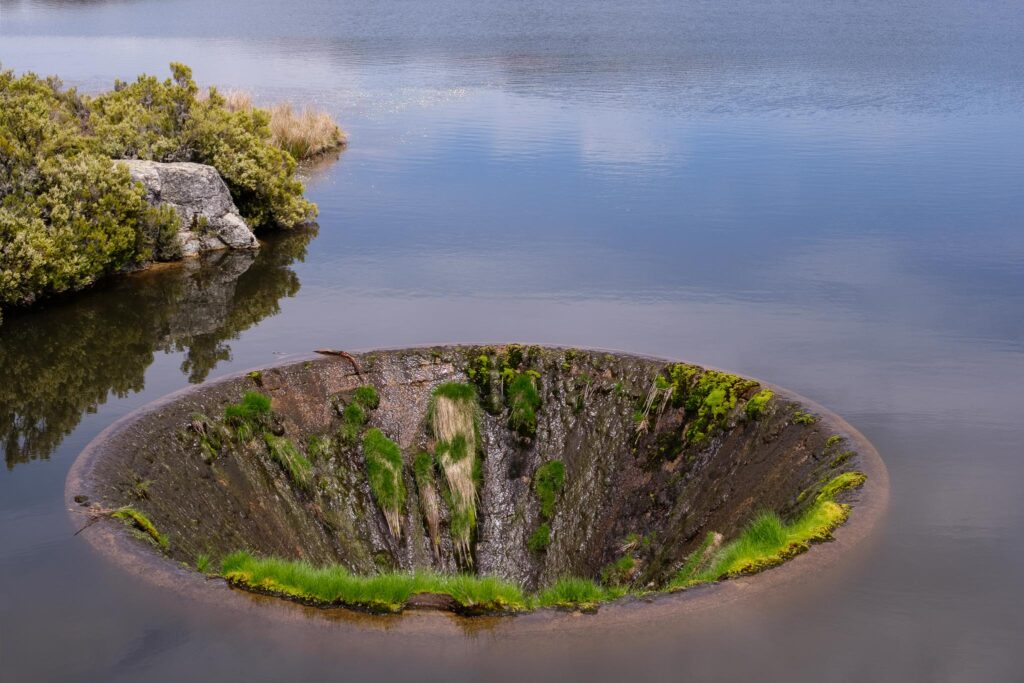
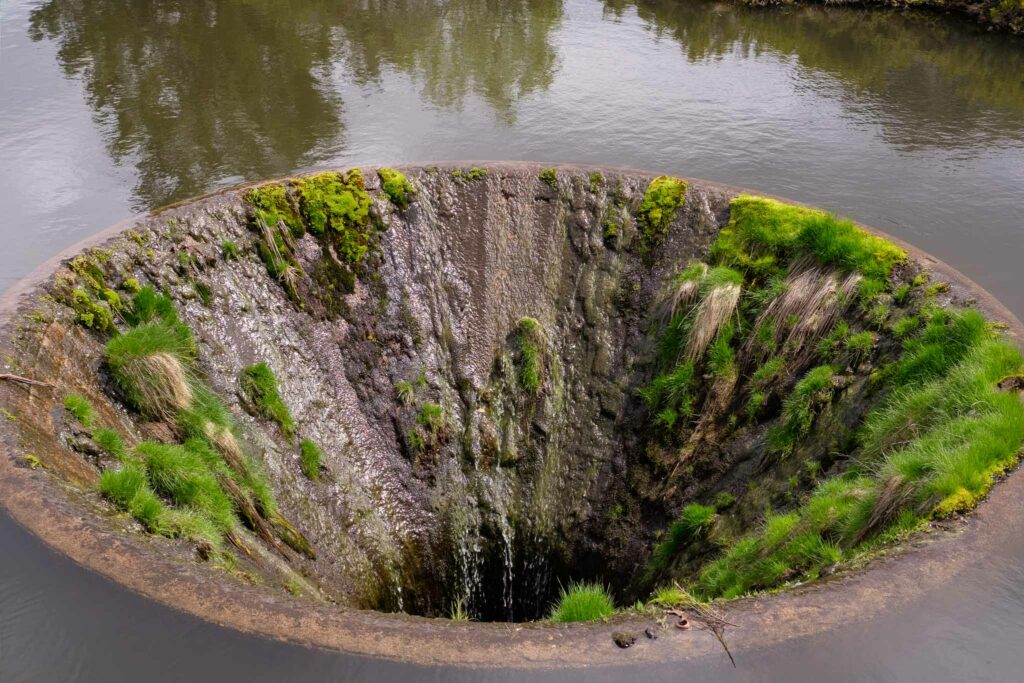
It is certainly a different and very interesting photographic subject. The small lake, surrounded by granite outcrops is also beautiful. The only sounds I hear are the wind, the water running in the creek, and the cacophony made by hundreds of frogs in mating season. Nature at its best.
After a while, it is time to go back. I stop several times to climb some boulders, so that I can admire the panoramic views. In a small pond I found a local species of newt catching the sunshine; with its green and orange colors, it is very well disguised in the middle of the grass.
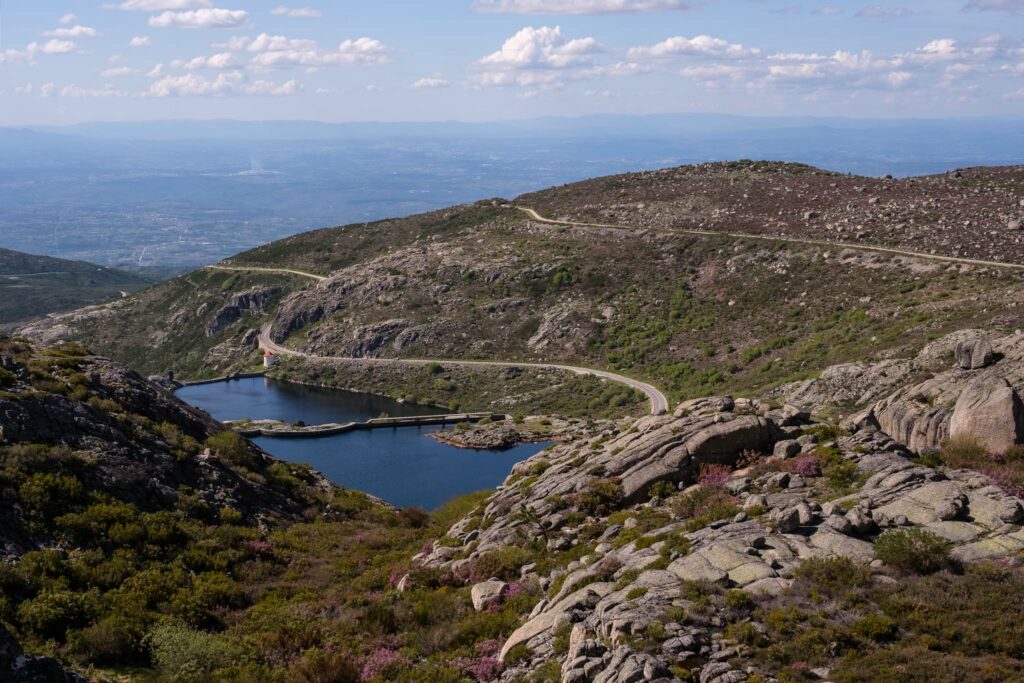
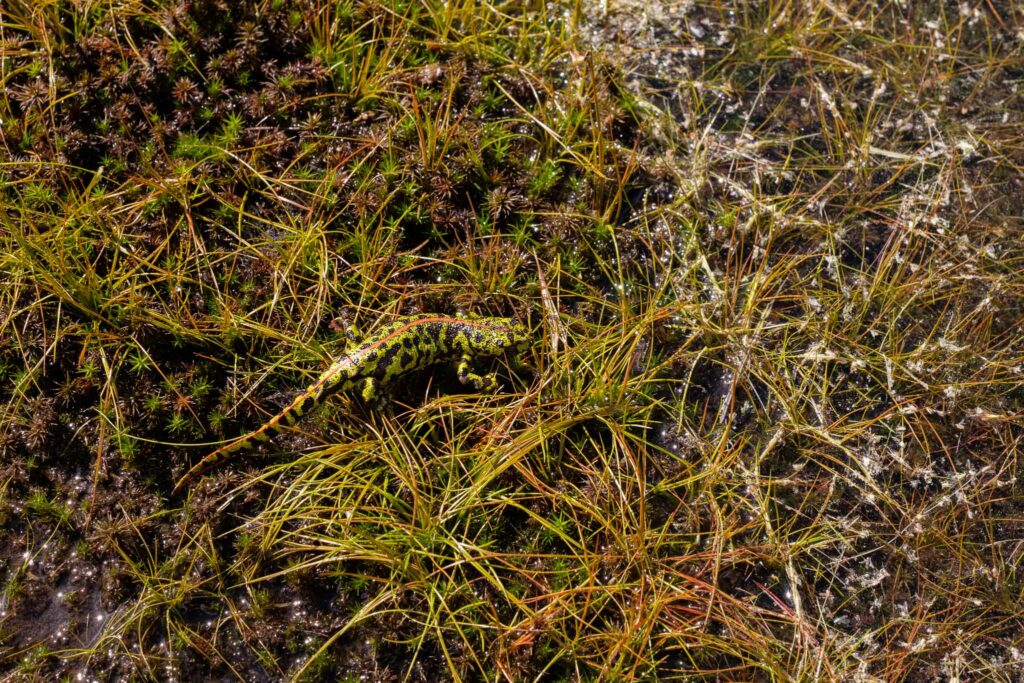
I was glad I was able to finally walk this trail in the heart of Serra da Estrela, a truly magical place. On the way back to Seia, I made an extra stop to visit another local attraction in the village of São Romão. This is a large granite boulder that has been eroded and shaped like an “old woman’s head”. It does look the part from the right angle. It was a nice way to finish this fantastic day.
